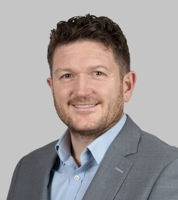15 April 2008
MORE children with chronic breathing disorders such as cystic fibrosis could soon be monitored at home instead of in hospital thanks to a group of adventurous young children who took part in a groundbreaking medical study on Mount Everest, it was announced today.
The Smiths Medical Young Everest Study (SMYES) investigated how nine healthy British children, then aged 6 to 13, coped with low oxygen levels (hypoxia), which can be fatal in very sick children, on the world’s highest mountain in March last year.
By investigating how healthy children’s bodies cope and adapt at altitude the SMYES team hoped to improve the chances of survival for very sick children.
The children underwent regular heart and lung function tests as they climbed progressively towards the Smiths Medical High Altitude Laboratory at Namche Bazaar, Nepal, at 3,500 metres (11,154ft). Oxygen levels at this altitude are much lower than at sea level, replicating the low oxygen levels experienced by babies born very prematurely or with heart abnormalities, children with chronic lung diseases such as cystic fibrosis and very sick
children in intensive care units.
The preliminary findings of the study, which were presented today at a Royal College of Paediatrics and Child Heath conference in York, provide valuable insights into how doctors and scientists can improve methods of assessing lung disease in children as well as methods of home monitoring to reduce the number of hospital visits required; easing the considerable stress involved for patients and families of sick children.
The key findings of the study are:
• Doctors could improve the quality of life of those with chronic long term lung diseases, such as cystic fibrosis, by enabling more sleep and respiratory studies to be performed at home. Non-invasive methods – such as the spirometry blowing test – were used to measure changes in breathing pattern and blood oxygenation levels as the subjects of the study were healthy children, providing doctors and scientists accompanying the children on the expedition with an excellent opportunity to assess how well such methods performed under field conditions away from the specialised laboratory facilities they are familiar with. These methods could help to lower stress for patients and their families, reduce waiting times and enable hospitals to use their resources more effectively.
• The children coped better than anticipated when exposed to oxygenation levels which would be deemed a matter of concern at sea level or in an intensive care unit. This means that, after further study, doctors may be able to lower the levels of oxygenation presently required for some preterm babies and patients in need of intensive care, minimising the risks and side effects. Overdosing preterm babies with oxygen can potentially lead to blindness and lung injury with long term consequences. The findings from this study will help doctors to better balance the need to avoid brain damage caused by hypoxia, with the need to prevent serious lung injury.*
• Children’s responses to low oxygen levels are extremely variable and dependent upon the individual, and could mean that their ability to cope with hypoxia is genetic. This explains why doctors cannot always predict how a child will cope in intensive care. Around one quarter of all children will suffer particularly badly from exposure to low oxygen as a result of disease or trauma. Increased knowledge from studies in healthy subjects at altitude could help to stratify risk, and develop tailored treatment plans for such children.
Smiths Medical, a leading supplier of medical devices and a specialist in respiratory care, supported the study and has contributed around £4 million towards medical research at University College London over the last decade.
The study worked closely with Caudwell Xtreme Everest (www.xtreme-everest.co.uk), a pioneering study of over 200 healthy adults which was being undertaken at the same time.
More analysis of the SMYES preliminary findings needs to be completed and the results coordinated with those from the Caudwell Xtreme Everest adult study.
Professor Janet Stocks, Professor of Respiratory Physiology at UCL, who led SMYES, said: “It is fair to say that under the challenging conditions experienced in Nepal, we learned a massive amount. Insight from the Young Everest study is already affecting the way in which we assess sick children at the Institute and at Great Ormond Street Hospital for Children.
“As a result of our feedback, the manufacturers are providing revised equipment and additional support, and we plan more field tests in the UK and at altitude abroad. Remote testing (at home) of NHS patients in this way could be achieved within two years, if all proceeds according to plan.” She added.
ENDS
Notes to editors
*There is a risk of blindness in preterm infants if too much oxygen is used and it can also cause lung injury with long term consequences. There is always a close balance between avoiding brain damage and preventing lung injury. There has been a tendency in the past to try to increase blood oxygenation levels very rapidly after birth in babies delivered prematurely and then maintain them at levels commonly observed in full term infants. The wisdom of this is now being queried as, had the baby remained in the womb, they would have been exposed to considerably lower levels of oxygen - and excessive exposure may be toxic with long term adverse effects. There is an international study currently in progress (BOOST trial) which is comparing the outcome in infants randomly allocated to different levels of oxygen. Similar questions are being raised about children in ICU.
Great Ormond Street Hospital for Children
Great Ormond Street Hospital for Children NHS Trust (GOSH) is a national centre of excellence in the provision of specialist children's health care, currently delivering the widest range of specialist care of
any children's hospital in the UK. It works in partnership with the UCL Institute of Child Health (ICH), part of University College London, and together they form the largest paediatric research and teaching
centre outside the Americas. It was recently designated the only Biomedical Specialist Academic Centre for paediatrics.
Institute of Child Health, University College London
In partnership with Great Ormond Street Hospital and as part of University College London, the ICH is the leading British academic research institution for child health. It was established in 1945 and currently has 472 staff. It supports 46 professorships and currently 110 Mphil/PhD students and 22 Doctors of Medicine/Master of Surgery students are studying at the ICH.
Smiths Medical Young Everest Study (SMYES)
SMYES is a research project coordinated by Great Ormond Street Hospital for Children (GOSH) and University College London’s Institute of Child Health (ICH). It is supported by Smiths Medical, part of the global technology business Smiths Group and a specialist in respiratory care. Doctors do not yet fully understand children’s responses to low oxygen levels, which are common in very sick children and can be fatal. SMYES aims to develop new treatments for critically ill children and those with breathing and sleep problems by investigating how healthy children, aged 6 to 13, cope with low oxygen levels on the world’s tallest mountain.
Caudwell Xtreme Everest (CXE)
Caudwell Xtreme Everest is a research project coordinated by the UCL Centre for Altitude, Space and Extreme (CASE) environment medicine - doctors and scientists studying human systems stretched to breaking point in extreme environments to increase our understanding of critically ill patients. A research team was placed on the summit of Mount Everest in 2007 who made the first ever measurement of the level of oxygen in human blood at this altitude. This is the centrepiece of an extensive programme of research into hypoxia (low oxygen levels) and human performance at extreme altitude aimed at improving the care of the critically ill and other patients where hypoxia is a fundamental problem. www.caudwell-xtreme-everest.co.uk
General media enquiries
Contact our global media and communications team at:
Please note – the press team can only answer enquiries from accredited members of the press.
Related articles

Half year results for 6 months ended 31 January 2025
Find out more

Smiths Group acquires Duc-Pac Corporation
Find out more

John Crane secures significant new asset management contracts in Saudi Arabia
Read our company news as John Crane secures significant new asset management contracts in Saudi Arabia
Find out more



